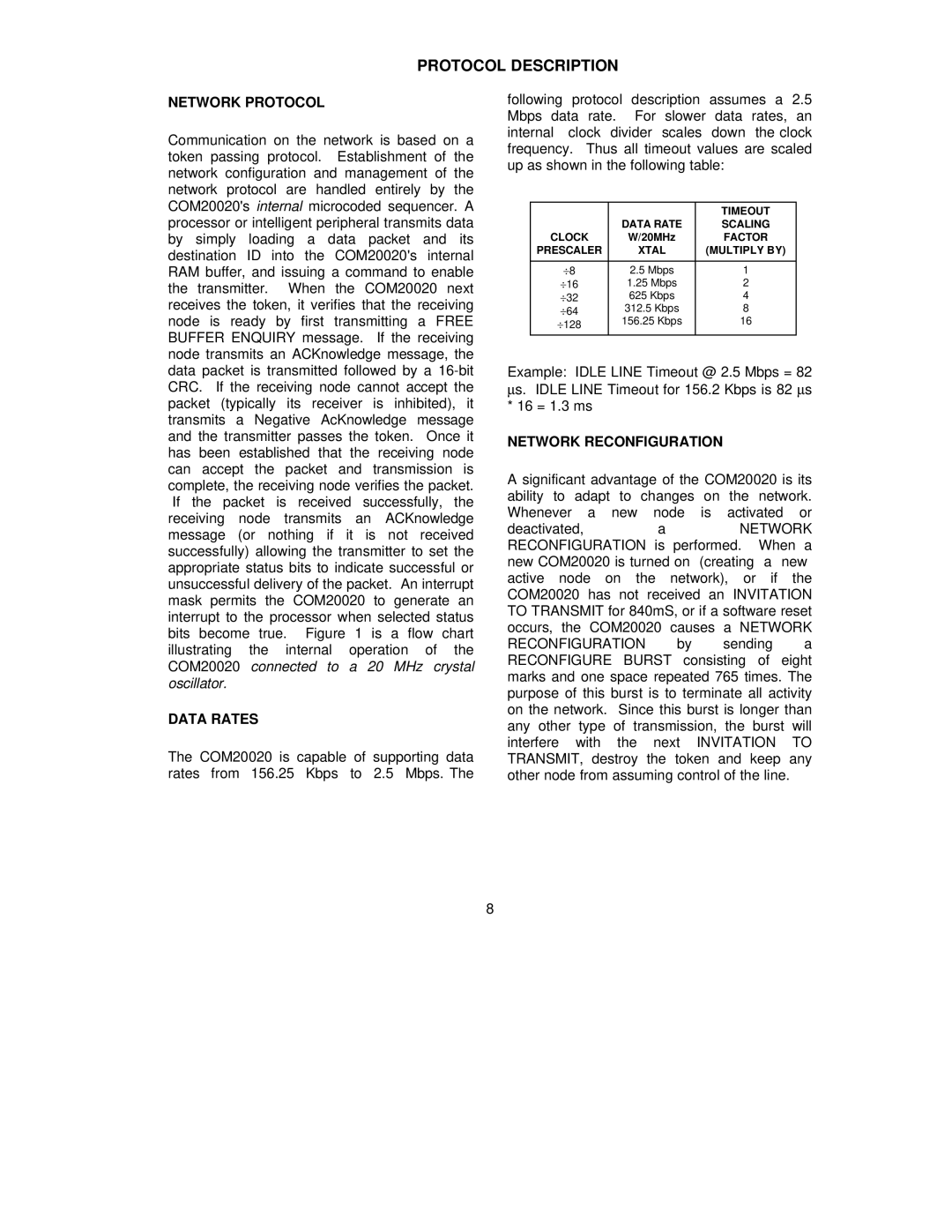PROTOCOL DESCRIPTION
NETWORK PROTOCOL
Communication on the network is based on a token passing protocol. Establishment of the network configuration and management of the network protocol are handled entirely by the COM20020'sinternal microcoded sequencer. A processor or intelligent peripheral transmits data by simply loading a data packet and its destination ID into the COM20020's internal RAM buffer, and issuing a command to enable the transmitter. When the COM20020 next receives the token, it verifies that the receiving node is ready by first transmitting a FREE BUFFER ENQUIRY message. If the receiving node transmits an ACKnowledge message, the data packet is transmitted followed by a
DATA RATES
The COM20020 is capable of supporting data rates from 156.25 Kbps to 2.5 Mbps. The
following protocol description assumes a 2.5 Mbps data rate. For slower data rates, an internal clock divider scales down the clock frequency. Thus all timeout values are scaled up as shown in the following table:
|
| TIMEOUT |
| DATA RATE | SCALING |
CLOCK | W/20MHz | FACTOR |
PRESCALER | XTAL | (MULTIPLY BY) |
|
|
|
÷8 | 2.5 Mbps | 1 |
÷16 | 1.25 Mbps | 2 |
÷32 | 625 Kbps | 4 |
÷64 | 312.5 Kbps | 8 |
÷128 | 156.25 Kbps | 16 |
|
| |
|
|
|
Example: IDLE LINE Timeout @ 2.5 Mbps = 82 μs. IDLE LINE Timeout for 156.2 Kbps is 82 μs * 16 = 1.3 ms
NETWORK RECONFIGURATION
A significant advantage of the COM20020 is its ability to adapt to changes on the network. Whenever a new node is activated or
deactivated,aNETWORK RECONFIGURATION is performed. When a new COM20020 is turned on (creating a new active node on the network), or if the COM20020 has not received an INVITATION TO TRANSMIT for 840mS, or if a software reset occurs, the COM20020 causes a NETWORK
RECONFIGURATION by sending a RECONFIGURE BURST consisting of eight marks and one space repeated 765 times. The purpose of this burst is to terminate all activity on the network. Since this burst is longer than any other type of transmission, the burst will interfere with the next INVITATION TO TRANSMIT, destroy the token and keep any other node from assuming control of the line.
8
